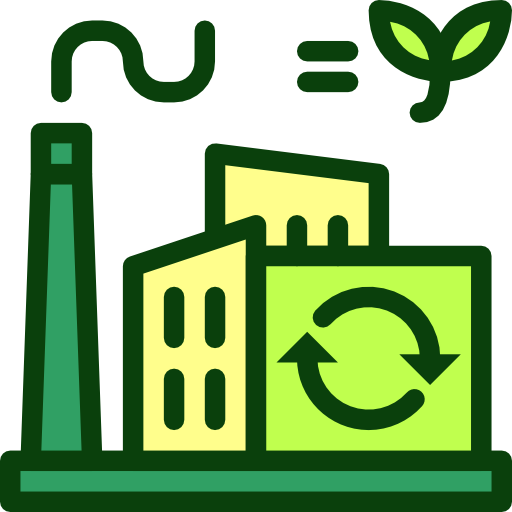Mongolia - Geography

Here, let us take a look at the Geography of Mongolia. Landlocked; strategic location between China and Russia. Mother's mean age at first birth is 20.5 years (2008 est.) (Note: data represents median age at first birth among women 20-24), whereas, the Maternal mortality ratio is 41 deaths/100,000 live births (2023 est.)
Geographical data of Mongolia
| Location | Northern Asia, between China and Russia |
|---|---|
| Geographic coordinates | 46 00 N, 105 00 E |
| Map references | Asia |
| Tarrain | vast semidesert and desert plains, grassy steppe, mountains in west and southwest; Gobi Desert in south-central |
| Natural Resources | oil, coal, copper, molybdenum, tungsten, phosphates, tin, nickel, zinc, fluorspar, gold, silver, iron |
| Natural Hazards | dust storms; grassland and forest fires; drought; "zud," which is harsh winter conditions |
| Irrigated Land | 796 sq km (2022) |
| Major rivers (by length in km) | Amur (shared with China [s] and Russia [m]) - 4,444 km note: [s] after country name indicates river source; [m] after country name indicates river mouth |
| Major aquifers | |
| Land Boundaries | 8,082 km |
| Border Countries | China 4,630 km; Russia 3,452 km |
| Coastline | 0 km (landlocked) |
| Climate | desert; continental (large daily and seasonal temperature ranges) |
| Area | |
| Total Area | |
| Land Area | 1,553,556 sq km |
| Water Area | 10,560 sq km |
| comparative Area | slightly smaller than Alaska; more than twice the size of Texas |
| Maritime Claims | |
| Elevations | |
| Highest point | Nayramadlin Orgil (Khuiten Peak) 4,374 m |
| Lowest point | Hoh Nuur 560 m |
| Mean elevation | 1,528 m |
| Land Use | |
| Agricultural land | 69% (2023 est.) |
| Agricultural land: arable land | arable land: 0.7% (2023 est.) |
| Agricultural land: permanent crops | permanent crops: 0% (2023 est.) |
| Agricultural land: permanent pasture | permanent pasture: 68.2% (2023 est.) |
| Forest | 9.1% (2023 est.) |
| Other | 21.9% (2023 est.) |
Population Distribution
Population sparsely distributed throughout the country; the capital of Ulaanbaatar and the northern city of Darhan support the highest population densities
People and Society
In Mongolia, the different Ethnic groups are such that we have: Khalkh 83.8%, Kazak 3.8%, Durvud 2.6%, Bayad 2%, Buriad 1.4%, Zakhchin 1.2%, Dariganga 1.1%, other 4.1% (2020 est.)
| Population | |
|---|---|
| Pop growth rate | 0.78% (2024 est.) |
| Birth rate | 14.9 births/1,000 population (2024 est.) |
| Death rate | 6.4 deaths/1,000 population (2024 est.) |
| Health expenditure | |
| Physicians Density | |
| Hospital bed Density | 10.6 beds/1,000 population (2021 est.) |
| Total fertility rate | 1.87 children born/woman (2024 est.) |
| Gross reproduction rate | 0.91 (2024 est.) |
| Contraceptive prevalence rate | |
| Est married women (ages 15-49) | 58.9% (2023 est.) |
| Literacy | |
| Education expenditures | |
| Net Migration rate | -0.8 migrant(s)/1,000 population (2024 est.) |
| Nationality | Mongolian | Mongolian(s) |
| Languages | |
| Religions | Buddhist 51.7%, Muslim 3.2%, Shamanist 2.5%, Christian 1.3%, other 0.7%, none 40.6% (2020 est.) |
| Age Structure | |
| 0-14 years | 25.7% (male 429,867/female 412,943) |
| 15-64 years | 68.4% (male 1,087,487/female 1,156,547) |
| 65 years and over | 5.9% (2024 est.) (male 78,242/female 116,590) |
| Dependency Ratios | |
| Total dependency ratio | 59.1 (2024 est.) |
| Youth dependency ratio | 50.2 (2024 est.) |
| Elderly dependency ratio | 8.9 (2024 est.) |
| Potential support ratio | 11.2 (2024 est.) |
| Median Age | |
| Total | 31.5 years (2024 est.) |
| Male | 30.1 years |
| Female | 32.8 years |
| Urbanization | |
| Urban population | 69.1% of total population (2023) |
| Rate of urbanization | 1.4% annual rate of change (2020-25 est.) |
| Major urban areas (Pop) | 1.673 million ULAANBAATAR (capital) (2023). |
| Sex Ratio | |
| At birth | 1.05 male(s)/female |
| 0-14 years | 1.04 male(s)/female |
| 15-64 years | 0.94 male(s)/female |
| 65 years and over | 0.67 male(s)/female |
| Total population | 0.95 male(s)/female (2024 est.) |
| Infant Motality | |
| Total | 19.4 deaths/1,000 live births (2024 est.) |
| Male | 22.4 deaths/1,000 live births |
| Female | 16.2 deaths/1,000 live births |
| Life Expectancy at birth | |
| Total population | 71.9 years (2024 est.) |
| Male | 67.8 years |
| Female | 76.3 years |
| Drinking Water Sources | |
| Improved: urban | urban: 94.2% of population (2022 est.) |
| Improved: rural | rural: 59.7% of population (2022 est.) |
| Improved: total | total: 83.5% of population (2022 est.) |
| Unimproved: urban | urban: 5.8% of population (2022 est.) |
| Unimproved: rural | rural: 40.3% of population (2022 est.) |
| Unimproved: total | total: 16.5% of population (2022 est.) |
| Sanitation facility acess | |
| Improved: urban | urban: 97.8% of population (2022 est.) |
| Improved: rural | rural: 78.7% of population (2022 est.) |
| Improved: total | total: 91.9% of population (2022 est.) |
| Unimproved: urban | urban: 2.2% of population (2022 est.) |
| Unimproved: rural | rural: 21.3% of population (2022 est.) |
| Unimproved: total | total: 8.1% of population (2022 est.) |
| Alcohol consumption per capita | |
| Total | 5.46 liters of pure alcohol (2019 est.) |
| Beer | 2.18 liters of pure alcohol (2019 est.) |
| Wine | 1.46 liters of pure alcohol (2019 est.) |
| Spirits | 1.82 liters of pure alcohol (2019 est.) |
| Other alcohols | 0 liters of pure alcohol (2019 est.) |
| Tobacco use | |
| Total | 28.9% (2025 est.) |
| Male | 51.9% (2025 est.) |
| Female | 7.2% (2025 est.) |
| Child marriage | |
| Women married by age 15 | 0.9% (2018) |
| Women married by age 18 | 12% (2018) |
| Men married by age 18 | 2.1% (2018) |
Demographic profile
All Important Facts about Mongolia
Want to know more about Mongolia? Check all different factbooks for Mongolia below.









